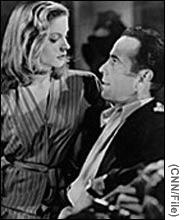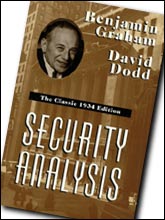NEW YORK (CNNfn) - Bogey and Bacall. Graham and Dodd. Siegfried and Roy. History – and Wall Street – is full of examples of successful pairings. But when it comes to retirement investing, the 401(k) and the IRA have not always enjoyed perfect synergy.
One is a company-sponsored savings plan that offers little control but the lure of employer contributions. The other offers complete control but perhaps too many choices and complicated rules. Most people haven't figured out how to get the best out of both.

|
|
|
Humphrey Bogart and Lauren Bacall made magic together. You can do the same with your 401(k) and IRA. | |
"You do want to look at both of them and try to have them work together and compliment each other," said Mari Adam, a certified financial planner from Boca Raton, Fla.
Why are the 401(k) and IRA so appealing? You get a 30-year delay on your tax bill. The advantage of tax-deferred savings is your money can grow even more thanks to the power of compound interest. Together, they can be a powerful tool in planning for retirement.
And most recently, President Bush signed legislation that will increase the maximum savings limits to $15,000 from $10,500 for 401(k)s by 2006 and to $5,000 from $2,000 for IRAs by 2008.
Unfortunately, a lot of people forget to look at the big picture when they're planning for retirement, taking into account all of their retirement plans so their money works harder for them. They treat each account separately, creating overlaps and incomplete asset allocation plans.
"You should do whatever you can to take advantage of tax-protected investing," said Peter Di Teresa, who writes the "Ask the Professor" advice column for Chicago fund-tracker Morningstar. "Whenever possible, if you have the money, you should add to a 401(k) and an IRA. It makes a lot of sense."
Even if you have a lousy 401(k), you can pick the best out the choices and then use your IRA to complete the picture for your investing strategy.
"You're going to have to work with what's there in your 401(k)," Adam said. "With your IRA, you can get creative. You're going to fill in the gaps."
Step 1: Look at your 401(k)
The 401(k) has come a long way in its 20-year history. Many companies will match your contributions 50 cents on the dollar up to 6 percent, for a total of 3 percent of your salary. Even if you can't contribute the maximum allowed under the law, you should contribute at least enough to get the match. If not, it's like passing up free money.
| |
 NEW SAVINGS LIMITS NEW SAVINGS LIMITS
|
|
| |
|
401(k)s - to $15,000 from $10,500
IRAs - to $5,000 from $2,000
|
|
|
The most important thing to keep in mind is to make the best of what you have to work with – whether it's a great plan or a lousy one.
At minimum, you'll probably have one stock fund, one bond fund, one "foreign stock" fund and one cash alternative, said Di Teresa.
"You can have a fantastic portfolio with four funds, but the problem is when the options aren't good," he said.
For example, the only stock fund option might be a mid-cap growth fund, which wouldn't be diversified enough on its own, Di Teresa said. Or, the "foreign stock" fund might focus only on small-caps.
| |

|
|
Graham and Dodd's book is a staple for many Wall Street pros. | |
If you have at least one option that is an S&P 500 index fund, a blue chip fund or a total stock market index fund, that's a good place to start, Di Teresa said.
You're going to have to face the fact that you have no control over what your company offers, said Tom Gryzmala, a certified financial planner from Alexandria, Va. Some companies may only offer two funds, while others offer 200.
Many financial pros say you can lobby your company to improve the 401(k) or even start a new plan.
"I would try to talk to your employer and see if they would change the investments," said Richard Applegate, a certified financial planner from Allison Park, Pa. "You might as well try if the choices stink or the offerings are really expensive."
But even if you have hundreds of choices, it could be as bad as if you only have two if you can't make good investing decisions, Grzymala said.
In other cases, companies may have large-value and large-growth funds, and you can use one or both of them to build a portfolio, Gryzmala said.
Look for funds with strong long-term returns, but if you've got bad choices just pick the best of the dogs, he said.
"If the company is matching you, then you're getting 50 cents on the dollar even if it's a dog fund," Gryzmala said.
Adam said you shouldn't feel obliged to invest in every option, either. If there are eight funds, that doesn't mean you have to put your money in all of them.
"You're going to have to work with what's there, but if all of the choices are bad except one, just take that one," Adam said.
Keep in mind, a lot of plans offer company stock as their match. There's not much you can do about it, but make sure your other choices don't also own the stock. You might love your job, but don't bank your retirement on the company, too.
Step 2: Express yourself with your IRA
It's important to think about your 401(k) and IRA together when you're building an asset allocation plan. (Click here for some model portfolios that take into account your age and risk tolerance).
The rules about whether you can deduct your IRA contributions will depend on whether you have a 401(k) and your income level.
If you have a 401(k) at work, you can still deduct your IRA contributions if you earn less than $43,000 a year in adjusted gross income for a single person or $63,000 for a couple, Applegate said.

|
|
|
Tiger trainers Siegfried and Roy. | |
"Most definitely you should put money in a 401(k) as well as an IRA if you can afford to do it," Applegate said. "The problem most people have is trying to get one dollar chase multiple needs. If they've got too much saved in retirement plans and not enough outside of them, they've over-allocated retirement. So first make sure you're saving the proper amount."
For people at higher income levels with a 401(k) at work, a Roth IRA might make sense. With a Roth, you can't deduct the contributions – you put in after-tax dollars – but with the withdrawals are tax-free.
You'll qualify for a Roth if you earn less than $95,000 in adjusted gross income for a single person (phased out at $110,000) or $150,000 for a couple (phased out at $160,000).
Click here to check your mutual funds on CNNfn.com.
"That money comes out with no taxes at all," Applegate said. "That's truly amazing."
And, if you have a 401(k) and your spouse doesn't work, you can open a deductible spousal IRA.
Applegate said it doesn't make much sense for a person with a 401(k) to open a non-deductible, traditional IRA since you'll use after-tax dollars to contribute to it and then have to pay taxes again on the earnings when you make withdrawals.
"It's double taxation and fairly dumb," Applegate said. "In my opinion it doesn't make a lot of sense to consider the non-deductible IRA route."
A midyear fund scorecard
Your IRA is where you can get creative, Adam said. You can enhance your retirement investing with a sector fund, or perhaps a real estate fund, which you're not likely to find in a 401(k). Likewise, you could pick an Asia fund for your IRA if that's your focus.
Many 401(k)s are weak when it comes to small-cap funds or international funds, so they might be good choices for an IRA, Adam said.
If you're filling in the gaps of a lackluster 401(k), you might want to go with a middle-of-the-road small-cap fund rather than a super aggressive fund, Di Teresa said.
But if you're lucky enough to have a great 401(k), you can give your IRA a more aggressive, speculative edge, Di Teresa said. It could be a focus on technology or health-care.
The IRA is different from a 401(k) because it will stay with you for years. Most financial pros recommend you roll your 401(k) into an IRA when you stop working so you will have more flexibility with your money. You could spend 30 years in retirement.
Click here to read about the three most important decisions you'll make with your IRA: Choosing a beneficiary, picking a life expectancy and picking a distribution method.
If you're smart with your IRA, it will probably outlast you and be something for your heirs. New IRA distribution rules offer even more tax benefits for your heirs.
"It's not very exotic," Applegate said about 401(k) and IRA synergy. "It's straightforward, logical thinking. But people get stymied. I don't think people think about making their money work for them at all, let alone how to make their money work for them when it comes to retirement investing with their 401(k) and IRA." 
|

